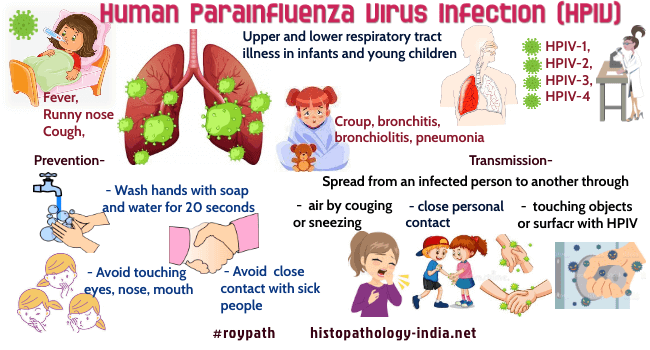|

Custom Search
|
|
Infectious Disease Online Pathology of Human Parainfluenza Virus Infection
|

|
Syn:
Human Parainfluenza Virus Infection
Human parainfluenza viruses (HPIVs) are enveloped, single-stranded RNA viruses in the Paramyxoviridae family with four antigenically distinct types known to infect humans: HPIV-1, HPIV-2, HPIV-3, and HPIV-4. HPIVs can cause a range of upper and lower respiratory tract illnesses including bronchitis, bronchiolitis, laryngotracheobronchitis (croup), and pneumonia. These viruses are important causes of respiratory disease in infants and young children. They are indeed the most common identifiable agents in the croup syndrome and are second only to respiratory syncytial virus as a cause of lower respiratory disease requiring hospitalization in infants. The parainfluenza viruses are distributed worldwide, and the best evidence of infection is a fourfold rise of antibody titre in convalescent serum collected 3 to 4 weeks after infection. The clinical manifestations vary from no illness or a very mild cold episode to life-threatening croup and bronchiolitis. The most common symptom associated with parainfluenza is a "cold". The viruses are transmitted from person to person by transfer of respiratory tract secretions. The virus infects the cells of the upper respiratory tract mucosa, and multiplication of the viruses in those cells is probably the pathogenic substrate of the most common clinical manifestation. Parainfluenze virus antigen have been demonstrated by immunoflourescence in the ciliated columnar epithelial cells in the nasal secretions of ill children. When the lung is involved, the pathologic changes are indistinguishable from those produced by other viral pneumonias.
|
|
|

